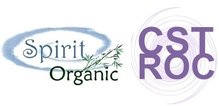If I had to list the books that have defined me as I’ve attempted to mature into an adult, I would have three on there that might surprise people: Raising Your Spirited Child, How to Talk So Kids Will Listen & Listen So Kids Will Talk, and Siblings Without Rivalry. It may seem strange, but parenting books have done so much to teach me how to understand myself and relate to others that I can’t imagine being the person I am today without them. Of course, I regularly reread them because I have not mastered their content (I’m still working on growing up, maybe I’ll get there in another forty years!)
Particularly taxing parenting challenges sent me back to my “basics” last week. As I was browsing through How to Talk, I made it all the way to the back of the book where Faber and Mazlish write about praise. Their words about praise were the first that I encountered (probably twelve years ago) that made me re-evaluate praise and what praise is exactly. They begin by talking about the importance of the child’s self-esteem:
“Certainly all the principles and skills we’ve talked about so far can help a child see himself as a person of worth. Each time we show respect for his feelings, each time we offer him a chance to make a choice, or give him a chance to solve a problem, he grows in confidence and self-esteem.
“How else can we help our children build a positive and realistic self-image? Surely praising them would seem to be another part of the answer. But praise can be tricky business. Sometimes the most well-meant praise brings about surprising reactions.”
They continue with an exercise that demonstrates some of these “surprising reactions” which include:
· Praise can make you doubt the praiser.
· Praise can lead to immediate denial.
· Praise can be threatening.
· Praise can force you to focus on your weaknesses.
· Praise can create anxiety and interfere with activity.
· Praise can also be experienced as manipulation.
I have a silly example from my own family. I told my mom that the girls and I were appearing on the evening news as part of a story about VBAC births. Her response: “Oh, honey, I’m so proud of you! I always knew you’d have your own TV show!” Sigh.
Faber and Mazlish go on to explain that helpful praise really has two components:
“1. The adult describes with appreciation what he or she sees or feels.
“2. The child, after hearing the description, is then able to praise himself.”
For me, the remarkable aspect of Faber and Mazlish’s approach is that it requires being truly present with the person you are trying to express appreciation to. “It’s a matter of really looking, really listening, really noticing and then saying aloud what you see and what you feel.” As a busy mom, being present in the moment with my daughters and their immediate agendas and needs is a real challenge in the midst of all the distractions (real and imagined). And, this requirement to be truly attending to my children has necessitated tremendous personal and spiritual growth on my part. Thus is the gift of parenting returned back to me many fold.
Giving my daughters this kind of quality attending has put many deposits in what Dr. Sears (in his many parentig books) refers to as their “emotional banks”. Faber and Mazlish refer to the emotional bank account, too: “All of [this observation of his capabilities] goes into his emotional bank and can’t be taken away. You can take away ‘good boy’ by calling him ‘bad boy’ the next day. But you can’t ever take away from him [acknowledged accomplishments.]… These moments, when his best was affirmed, become lifelong touchstones to which a child can return in times of doubt and discouragement. In the past he did something he was proud of. He has it within him to do it again.”
Note that they do not say “In the past he did something his parents were proud of.” How many times each day do I remind myself that my children are not here to make me proud, that they are here to grow into their own beings and fulfill their own purpose in the world, making THEMSELVES proud? Ack! Yet again I discover that it’s not about me! But, again, the gift is that I can go about my business doing things that will make me proud of myself, that nurture my self-esteem, instead of transferring all of that effort, investment and burden onto my children.
Don’t get me wrong: I am so proud of my kids most of the time that it makes me feel like I’ll explode with feeling and pleasure. But, I try to remember to offer them appreciative observations of their efforts so that they can feel their own pride and not get it all confused with mine.


 RSS Feed
RSS Feed